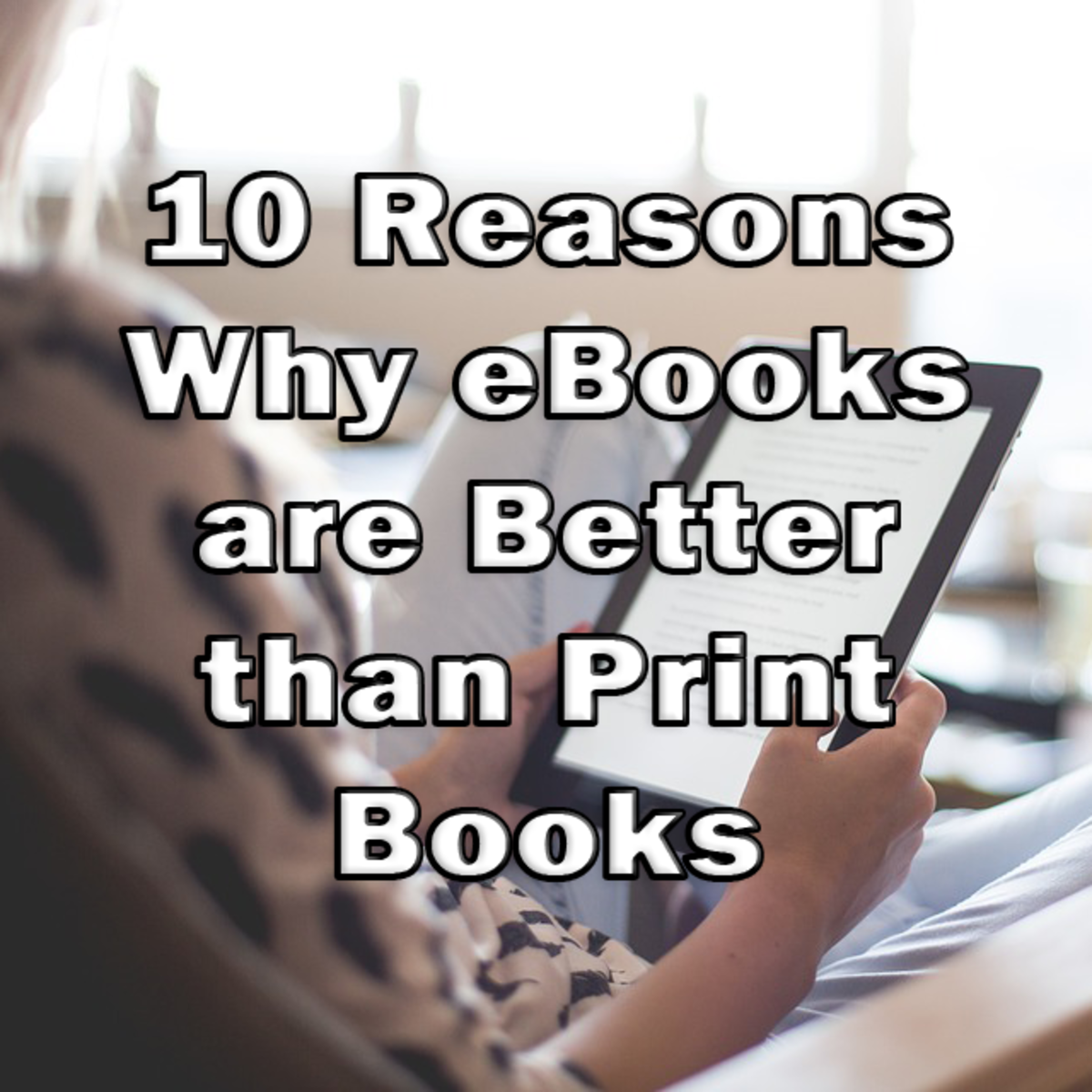
Why print books are better for toddlers than tablets? This exploration delves into the numerous benefits of engaging with print books, highlighting how they foster crucial developmental skills in young children. From enhancing sensory experiences to sparking imagination, print books provide a unique learning opportunity unlike the passive nature of tablet use.
Toddlers thrive on active engagement, and print books offer exactly that. Turning pages, feeling the textures, and interacting with colorful illustrations all stimulate multiple senses and encourage exploration. This active participation contrasts sharply with the often-passive experience of a tablet, where toddlers may be more focused on simple interactions rather than building a connection with the content.
Developmental Benefits of Print Books for Toddlers
Print books offer a unique and enriching experience for toddlers, fostering a multitude of developmental skills that tablets often fail to replicate. The tactile nature of turning pages, the visual stimulation of illustrations, and the opportunity for interaction between parent and child create a rich learning environment that nurtures cognitive, sensory, and motor development in profound ways.The physical act of handling a book, from turning pages to holding it, engages toddlers’ hands and fingers in a way that promotes fine motor skill development.
This direct interaction, rather than the passive scrolling of a tablet screen, creates a deeper connection with the learning material.
Cognitive Development
Toddlers develop crucial cognitive skills through the exploration and engagement with print books. The repetition of familiar words and phrases within stories strengthens vocabulary and language comprehension. The ability to anticipate what happens next in a story, based on prior experiences and visual cues, encourages problem-solving and critical thinking. Visual patterns and illustrations help toddlers recognize shapes, colors, and objects.
This interactive exploration of print materials allows for a richer and more complex learning experience compared to the often-isolated nature of tablet interactions.
Sensory Development
The diverse textures and colors found in print books stimulate toddlers’ senses. The feel of the paper, the weight of the book, and the varying textures of illustrations provide a rich sensory experience. This is in contrast to the often-uniform and flat sensory input of a tablet screen. For example, a page with rough textured paper or a picture with contrasting colors can provide tactile and visual stimulation, engaging various sensory pathways.
Print books are so much better for little ones than tablets, fostering crucial fine motor skills and eye-hand coordination. Just like how focusing on the physical act of turning pages strengthens a child’s cognitive development, a healthy diet also plays a big role. In fact, some are touting edible insects as the next superfood trend, why edible insects are the next superfood trend , packed with protein and essential nutrients.
Ultimately, encouraging a child’s natural development through physical engagement, like with print books, is a better approach than relying on digital screens.
Motor Skills Development
The physical act of turning pages and holding a book directly impacts toddlers’ motor skills. The coordinated movements required to manipulate a book help develop fine motor skills. This physical interaction is in sharp contrast to the passive nature of tablet use, which primarily relies on touch input without the same degree of physical engagement.
Language Development
Print books are powerful tools for language development. The repetition of words, the use of different tones and expressions in storytelling, and the interaction with a caregiver during reading time contribute to vocabulary expansion and language comprehension. For instance, pointing to objects in the illustrations and discussing their names during story time strengthens a toddler’s understanding of the relationship between words and objects.
Encouraging Imagination and Storytelling
Print books often spark imagination and creativity in toddlers. The engaging narratives and colorful illustrations provide a platform for toddlers to create their own interpretations and stories. This imaginative process is often inhibited by the more structured and limited nature of tablet content. For example, a story about animals in a forest might inspire a toddler to create their own animal characters and adventures.
Developmental Stages and Corresponding Benefits
| Age Range | Skill Development | Print Book Activity | Tablet Activity |
|---|---|---|---|
| 12-18 months | Object permanence, cause and effect, fine motor skills | Interactive books with textures, simple stories, pointing to pictures | Simple touch-screen games (limited benefits for development) |
| 18-24 months | Vocabulary development, language comprehension, early literacy | Picture books with simple narratives, songs and rhymes, pointing to pictures | Limited educational apps; often lacking in interaction and depth |
| 2-3 years | Complex language, narrative understanding, imagination | Books with more complex stories, illustrations, asking questions about the story | Basic educational apps with limited opportunities for interactive storytelling |
Sensory and Motor Skill Stimulation
Toddlers learn through their senses, exploring the world with their hands, mouths, and eyes. Tactile experiences are crucial for developing their understanding of objects and their properties. Print books, with their diverse textures and interactive elements, provide a rich sensory environment that fosters important developmental milestones. Unlike tablets, which offer limited sensory engagement, print books stimulate a wider range of tactile and motor skills.Print books are more than just words on a page; they are a multi-sensory experience designed to engage toddlers.
The varied textures, colors, and shapes of illustrations and the pages themselves encourage exploration and interaction, unlike the flat, unchanging screen of a tablet. This active engagement is vital for developing fine motor skills, hand-eye coordination, and a deeper understanding of the world around them.
Tactile Exploration Through Print Books
Print books offer a plethora of tactile experiences. The different types of paper used in books – smooth, rough, textured – provide a variety of sensations for toddlers to explore. The weight of the book itself, its thickness, and the different materials used in the illustrations all contribute to the sensory experience. For instance, a book with a page featuring crinkled paper allows toddlers to explore the varied tactile sensations.
Similarly, a book with embossed illustrations allows toddlers to feel the raised details and gain a deeper understanding of the depicted object. These tactile experiences are crucial for developing their understanding of the world around them and promoting sensory exploration.
Sensory Input in Different Book Elements
The diverse elements within a print book engage multiple senses. Illustrations, for example, can be vibrant and colorful, stimulating visual development. The use of different materials in illustrations, such as felt or foam, adds to the tactile experience. The sounds associated with turning pages, or the crinkling sounds of certain types of paper, also stimulate auditory development.
These multi-sensory experiences are absent in the limited sensory engagement of a tablet. The constant visual stimulation of a screen, without the tactile interaction, can be less stimulating for toddlers in the long run.
Comparing Sensory Input: Print Books vs. Tablets
| Sensory Input | Print Book | Tablet | Description |
|---|---|---|---|
| Visual | Illustrations, colors, shapes | Screen display | Print books offer diverse visuals, encouraging exploration of different colors and patterns. Tablets offer a limited, often static, visual experience. |
| Tactile | Different paper textures, illustrations, objects | Smooth screen | Print books provide various textures, encouraging touch and exploration. Tablets offer a uniform, unchanging surface, limiting tactile engagement. |
| Auditory | Turning pages, crinkling sounds | Sound effects (often pre-recorded) | Print books offer unique sounds from the materials. Tablets provide limited sound input, often as pre-recorded effects. |
| Motor | Turning pages, manipulating objects | Touchscreen interaction | Print books encourage physical manipulation, fostering fine motor skills. Tablets rely on touchscreens, which provide a less active form of interaction. |
Visual and Cognitive Stimulation
Print books offer a unique and engaging visual experience for toddlers, fostering crucial cognitive development that tablets often fail to replicate. The tactile and visual richness of a printed page encourages focused attention and exploration, stimulating problem-solving abilities in ways that digital screens often don’t. This hands-on interaction nurtures important visual cues and spatial reasoning skills, laying a strong foundation for future learning.The controlled visual environment of a print book allows toddlers to absorb information at their own pace, unlike the fast-paced, often overwhelming nature of a tablet’s interface.
This slower, more deliberate engagement with print materials allows for deeper processing and comprehension. Print books, in essence, provide a more enriching and stimulating visual experience, supporting a child’s overall development.
Visual Stimulation and Focus
Visual stimulation from print books significantly enhances focus and attention in toddlers. The static nature of print, with its clear lines and shapes, allows for sustained visual exploration. The absence of distracting animations or rapid transitions found on tablets allows toddlers to concentrate on the details within the book, developing focused attention spans. This focused visual exploration fosters cognitive development, allowing for more in-depth processing and understanding of the world around them.
Print Books vs. Tablets: A Visual Comparison
Print books offer a controlled and curated visual experience that tablets often lack. The tactile sensation of turning pages, the distinct shapes and colors, and the deliberate nature of exploring the content within the book are all unique and engaging experiences for toddlers. Tablets, on the other hand, often overwhelm young children with excessive visual stimulation, which can lead to distraction and a lack of sustained focus.
This difference in visual experience profoundly impacts the way toddlers interact with and learn from the materials.
Print books offer so much more than a tablet for little ones. They foster a tactile experience, encouraging exploration and engagement with the world around them. Plus, the simple act of turning pages promotes fine motor skills. And to be honest, I think the real answer to making masks more socially acceptable in our society lies in a few key steps as outlined in this fascinating article about the subject heres what it will take to normalize wearing masks in america.
Ultimately, print books, with their tangible pages and lack of screen time, are the better choice for stimulating a toddler’s development.
Encouraging Visual Exploration and Problem-Solving
Print books encourage visual exploration and problem-solving skills in toddlers through various methods. Interactive elements within print books, like puzzles or simple mazes, provide opportunities for toddlers to engage with visual cues and develop problem-solving strategies. The static nature of the images allows for closer observation and analysis, encouraging the development of visual discrimination and pattern recognition. For example, a book featuring different animals will allow a toddler to visually distinguish and compare features.
This fosters the ability to solve simple problems through visual observation and analysis.
Visual Cues and Spatial Reasoning
Visual cues play a critical role in early childhood development, laying the foundation for spatial reasoning and problem-solving. Print books offer a wealth of visual cues that support these developmental milestones. The arrangement of objects, characters, and scenes within a print book helps toddlers develop spatial awareness and an understanding of relationships between different elements. For example, a book illustrating a child building a tower helps the toddler understand spatial relationships and consequences of actions.
Comparison Table: Visual Engagement
| Visual Cues | Print Book | Tablet | Impact |
|---|---|---|---|
| Clear lines and shapes | Distinct, static images | Moving images, animations | Print books allow for focused attention and visual discrimination. Tablets can be overwhelming and distracting. |
| Color variations | Controlled color palettes | Often vibrant and overwhelming color schemes | Print books encourage color recognition and understanding. Tablets might overwhelm the senses. |
| Object arrangement | Organized layouts, defined spaces | Random, often unpredictable content | Print books develop spatial awareness. Tablets can lack structure. |
| Tactile experience | Turning pages, feeling textures | Touchscreen interaction | Print books provide a physical engagement, promoting a deeper connection. Tablets lack this tactile aspect. |
Engagement and Focus

Print books offer a unique and engaging experience for toddlers, fostering focused attention in ways that tablets often can’t replicate. The tactile nature of turning pages, the rich sensory details in illustrations, and the shared experience of reading together all contribute to a deeper level of engagement. This active participation contrasts sharply with the passive nature of screen time, where toddlers often flit from one feature to another, hindering sustained focus.The physical act of holding a book, feeling the paper, and turning the pages creates a tangible connection to the story.
This active engagement fosters deeper concentration and allows toddlers to become more invested in the narrative. Contrast this with the often fleeting nature of screen time, where the constant stimulation can quickly lead to distraction and a shorter attention span.
Maintaining Focus During Print Book Activities
Print books naturally encourage sustained attention. The predictable structure of a story, the repetition of words and phrases, and the visual cues in illustrations create a sense of familiarity and security. This predictability provides a framework for toddlers to follow and helps them maintain their focus on the activity at hand. For example, the rhythm of the story, the repetition of certain words, and the familiar illustrations create a consistent experience that toddlers can easily grasp and follow.
Maintaining Focus During Tablet Activities
Tablet use, while offering some interactive elements, often presents a deluge of stimuli that can quickly overwhelm a toddler’s attention span. The constant barrage of moving images, sounds, and interactive features can lead to rapid shifts in focus, hindering the development of sustained attention. The immediate gratification offered by many apps, with instant feedback and rewards, can also lead to a reduced ability to focus on tasks that require more sustained effort.
For example, a toddler might be easily distracted by a new game or animation, interrupting the flow of the activity and impacting their overall focus.
Strategies for Maintaining Focus, Why print books are better for toddlers than tablets
| Activity | Print Book | Tablet | Strategy |
|---|---|---|---|
| Reading a story | Holding a book and turning pages | Watching a video or playing an app | Establish a routine, read together at a consistent time. Focus on one story at a time. Limit screen time to short, focused intervals. |
| Looking at illustrations | Touching and exploring illustrations | Viewing images or animations | Use prompts like “What do you see?” or “What color is that?” to engage with the images. Offer choices or questions about the illustrations. |
| Participating in an activity book | Completing a coloring page or tracing shapes | Playing a matching game or educational app | Provide clear instructions, break the activity into smaller steps. Offer positive reinforcement and praise for effort. |
| Playing with toys | Playing with toys that accompany a storybook | Playing an interactive game | Limit the number of toys or activities at one time. Focus on a single activity. Encourage sustained engagement with toys. |
Language Development and Literacy
Print books aren’t just a source of entertainment for toddlers; they are powerful tools for fostering language development and laying the foundation for future literacy. The rich language environment created by print books, coupled with interactive reading experiences, provides toddlers with a unique opportunity to absorb and process language in a meaningful way. This crucial developmental period is characterized by rapid language acquisition, and print books play a vital role in nurturing this process.Toddlers learn by mimicking and interacting with their surroundings.
Print books, with their vibrant illustrations and engaging stories, provide a rich sensory experience that encourages toddlers to actively participate in the learning process. This active engagement, coupled with repeated exposure to language, significantly impacts their vocabulary development and comprehension skills.
Impact of Print Books on Language Development
Print books expose toddlers to a wider range of vocabulary and sentence structures than they might encounter in everyday conversations. The carefully crafted language in books expands their understanding of different word meanings and grammatical patterns. This exposure is particularly important in building a strong foundation for reading comprehension later on. Furthermore, the repetition of words and phrases in stories reinforces their understanding and memorization, leading to more confident and fluent language use.
Interactive Reading and Vocabulary Building
Interactive reading fosters a dynamic learning environment. As parents or caregivers read aloud, they can point to pictures, ask questions about the story, and encourage toddlers to express their thoughts and feelings. These interactions not only build vocabulary but also enhance language comprehension. For example, a parent reading a book about farm animals can point to the picture of a cow and ask, “Can you say ‘cow’?” This interaction helps solidify the connection between the word and the object.
Similarly, asking questions about the story’s plot, characters, or setting prompts toddlers to think critically and use language to express their understanding.
Print books are so much better for little ones than tablets. They foster a tactile experience, encouraging physical engagement and hand-eye coordination. Ultimately, it’s about nurturing those developing minds, and what makes motherhood beautiful is often found in those precious moments of connection. Plus, print books are a tangible treasure, unlike a screen that can easily become a distraction, making them a more enriching experience for toddlers.
Exploring different worlds through beautifully illustrated pages strengthens the learning process, and this is why print books are a wonderful gift for growing minds. what makes motherhood beautiful Reading together builds memories and strengthens the parent-child bond.
Importance of Repeated Exposure to Language
Repeated exposure to language through print books is crucial for language development. Hearing the same words and phrases repeatedly, within different contexts, helps toddlers internalize the meaning and usage of these words. The consistent exposure in books reinforces the learning process, making the language more accessible and comprehensible. This repetition, coupled with the richness of the language used in books, is far more effective than limited, sporadic exposure to language found in other mediums.
Promoting Pre-Literacy Skills
Print books play a significant role in developing pre-literacy skills. The visual cues, such as the arrangement of words on a page, the different fonts, and the layout of the book, prepare toddlers for the structure of written language. Furthermore, engaging with the illustrations and anticipating the next page or part of the story cultivates early literacy skills, such as prediction, comprehension, and sequencing.
These fundamental skills are essential building blocks for future reading and writing proficiency.
Print Books vs. Tablets: A Comparative Analysis
| Feature | Print Book | Tablet | Impact |
|---|---|---|---|
| Language-Rich Environment | High. Books use a variety of vocabulary, sentence structures, and storytelling techniques. | Often limited. Content might be repetitive or rely on simple phrases. | Print books foster a richer language environment, expanding toddlers’ vocabulary and understanding of language. |
| Interactive Engagement | High. Parents can engage in meaningful dialogue, ask questions, and point to objects. | Limited. Interaction is often passive, relying on pre-programmed responses or minimal input. | Interactive reading with print books promotes active participation and deepens understanding. |
| Visual Attention | Focused. Illustrations and the physical book encourage sustained attention. | Often fragmented. Screens can be distracting. | Print books facilitate sustained visual attention, fostering focused learning. |
| Development of Pre-Literacy Skills | Strong. Exposure to the layout, font, and sequence of stories develops pre-literacy skills. | Limited. Screen-based activities might not promote the same development. | Print books support the development of crucial pre-literacy skills. |
Imagination and Creativity: Why Print Books Are Better For Toddlers Than Tablets
Print books are more than just words on paper; they are gateways to a world of imagination. They ignite a child’s creativity, allowing them to explore different scenarios and perspectives, and fostering a love for storytelling that extends far beyond the pages. The rich visuals and narratives in print books spark a child’s imagination in ways that digital devices often cannot replicate.The illustrations in print books, with their unique style and detail, invite children to interpret and create their own stories.
This visual stimulation encourages a deeper connection with the narrative and fosters a sense of wonder and excitement that can lead to imaginative play and creative expression.
The Role of Print Books in Spark Imagination
Print books stimulate a child’s imagination by providing a rich and engaging environment for their developing minds. The static images and carefully crafted words within a book offer children the opportunity to fill in the gaps and develop their own narratives. This encourages a deeper level of engagement and interpretation. For example, a simple picture of a child playing with a toy train can spark a child’s imagination to create elaborate stories about the train’s adventures, the journeys it takes, and the characters it encounters.
Examples of How Illustrations and Stories Encourage Imaginative Play
Illustrations in print books can be incredibly powerful tools for sparking imaginative play. A detailed illustration of a fantastical creature, for instance, can inspire children to create their own versions of the creature and develop entire worlds around it. Similarly, a story about a daring explorer traversing a jungle can inspire children to act out the story, creating their own characters and scenarios.
These vivid descriptions and detailed illustrations within print books give children the building blocks they need to construct their own worlds and stories.
How Print Books Inspire Storytelling and Role-Playing
Print books are excellent catalysts for storytelling and role-playing. The narratives within print books provide a framework for children to develop their own narratives and characters. For example, a story about a princess rescuing a prince from a dragon can inspire a child to create their own stories about princesses, princes, and dragons. They can then act out these stories, assigning roles and creating their own dialogues.
The act of recreating these narratives through play is a crucial step in developing language skills, social interaction, and emotional intelligence.
Comparing Opportunities for Imaginative Play in Print Books vs. Tablets
| Play Style | Print Book | Tablet | Impact |
|---|---|---|---|
| Imaginative Storytelling | Children create their own stories based on illustrations and narrative. | Storytelling is often limited to the predefined content. | Print books foster deeper engagement with narrative, leading to more creative storytelling. |
| Role-Playing | Illustrations and characters in print books provide a foundation for children to create and enact their own scenarios. | Interactive games might offer role-playing, but the experience lacks the tangible element of print. | Print books promote richer, more personalized role-playing, enabling children to express their creativity more freely. |
| Sensory Exploration | Tactile interaction with the book, turning pages, and experiencing the texture of the paper enhances engagement. | Screen-based interaction limits the sensory experience. | Print books engage multiple senses, fostering deeper engagement and comprehension. |
| Visual Interpretation | Illustrations in print books are static but allow for children to develop their own interpretations. | Visuals on tablets can be overwhelming and distracting. | Print books allow for more focused and meaningful engagement with visuals, promoting deeper understanding and creative thinking. |
How Print Books Foster Imaginative Storytelling and Narrative Development
Print books provide a fertile ground for developing imaginative storytelling and narrative skills. The carefully crafted narratives and vivid imagery encourage children to think critically about characters, plot, and themes. The act of turning pages and experiencing the progression of the story cultivates an understanding of cause and effect, sequence, and narrative structure. This process, in turn, strengthens their ability to construct their own stories and narratives, building their cognitive and language skills.
Final Conclusion

In conclusion, print books offer a wealth of developmental advantages for toddlers, far surpassing the limitations of tablets. The tactile experience, sensory stimulation, and active engagement inherent in print books nurture cognitive, motor, and language skills in ways that digital devices simply cannot replicate. While tablets have their place, print books provide a more holistic and enriching learning experience that empowers young children to reach their full potential.





